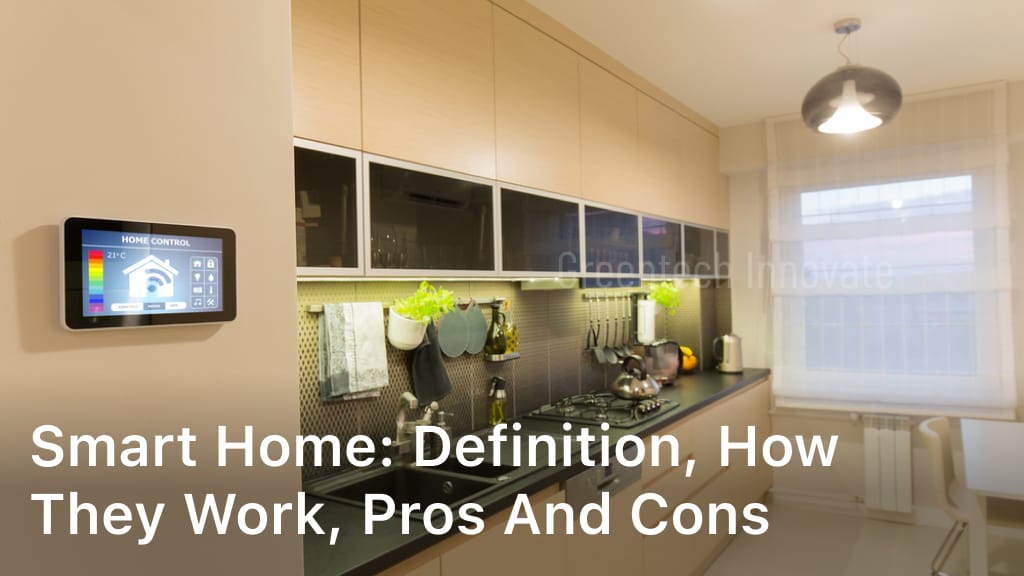Welcome to our comprehensive guide on Smart Homes. In this article, we will explore the fascinating world of Smart Home technology, including what it is, how it works, and the pros and cons of embracing this innovative way of living. Whether you’re a tech enthusiast or simply looking to make your daily life more convenient and efficient, understanding the ins and outs of Smart Homes is essential. What is a Smart Home? A Smart Home is a residential space that incorporates advanced technology to enhance the functionality and automation of various aspects of the home. It is equipped with interconnected devices and systems that can communicate with each other and be controlled remotely, offering homeowners a new level of convenience, efficiency, and comfort. At its core, a Smart Home utilizes the Internet of Things (IoT) technology, enabling devices and appliances to connect and interact with each other through a common network. This allows homeowners to control and manage different aspects of their home, such as lighting, heating, security, entertainment systems, and more, using their smartphones, tablets, or voice commands. With the integration of sensors, cameras, voice recognition systems, and artificial intelligence, a Smart Home can learn from the occupants’ habits and preferences, making adjustments and automating tasks to create personalized and efficient living spaces. By embracing this cutting-edge technology, homeowners can enjoy a myriad of benefits, including improved energy efficiency, enhanced security and surveillance, simplified home management, increased comfort and convenience, and even potential cost savings over time. In the next section, we will explore in detail how Smart Homes work, shedding light on the key technologies and devices that enable this seamless integration of technology within the home environment. How Do Smart Homes Work? In this section, we will explore the inner workings of a Smart Home and discover the technologies and devices that make it possible. Smart Homes are designed to enhance convenience, security, energy efficiency, and overall comfort within the home environment. Let’s take a closer look at the key components that enable Smart Homes to function seamlessly. Sensors and Devices Smart Homes rely on a network of sensors and devices to collect data and interact with the environment. These devices can include motion sensors, temperature sensors, door and window sensors, and cameras. They work together to provide real-time information and enable automation based on specific triggers or conditions. Connectivity Connectivity is crucial in a Smart Home system. Devices communicate with each other and with the homeowner through a central hub or a home automation platform. This allows for seamless integration and remote control of various aspects of the home, such as lighting, thermostats, security systems, and entertainment systems. Home Automation Platforms Home automation platforms serve as the brain of a Smart Home. These platforms, such as Amazon Alexa, Google Home, or Apple HomeKit, enable users to control and manage their Smart Home devices using voice commands or mobile apps. They provide a centralized interface for monitoring and controlling different systems in the home. Data Analysis and Machine Learning Data analysis and machine learning play a significant role in Smart Homes. The collected data from various sensors and devices is analyzed to develop patterns and make intelligent predictions. Machine learning algorithms can recognize behavioral patterns, adjust settings automatically, and offer personalized experiences to homeowners. Integration with Internet of Things (IoT) A Smart Home is part of the larger Internet of Things (IoT) ecosystem, where devices and systems are interconnected to share information and provide seamless functionality. Integrating with IoT allows Smart Homes to access a wide range of services, such as weather updates, energy management, and home security. Key Components Function Sensors and Devices Collect data and trigger automation Connectivity Enable communication between devices Home Automation Platforms Central control and management Data Analysis and Machine Learning Identify patterns and provide personalized experiences Integration with Internet of Things (IoT) Access additional services and functionalities Pros and Cons of Smart Homes As with any technological advancement, Smart Homes come with their fair share of advantages and disadvantages. It is important for individuals to carefully evaluate the pros and cons before embracing this innovative technology. The Pros of Smart Homes: Convenience: Smart Homes offer a higher level of convenience by allowing homeowners to control various aspects of their homes remotely. This includes adjusting the temperature, turning on/off lights, and even managing home security systems, all at the touch of a button. Energy Efficiency: By integrating smart devices and systems, Smart Homes can help reduce energy consumption. Automated thermostats, smart lighting, and energy monitoring systems enable homeowners to optimize energy usage, resulting in potential cost savings and reduced environmental impact. Improved Security: Smart Home technology provides homeowners with enhanced security features such as remote monitoring, surveillance cameras, and smart locks. These features offer peace of mind by allowing homeowners to keep a watchful eye on their property, deterring potential intruders, and promptly responding to security threats. Enhanced Comfort: Smart Homes can create a more comfortable living environment by automating tasks and adjusting settings to suit individual preferences. From adjusting the lighting to creating personalized temperature zones, Smart Homes adapt to homeowners’ needs, ensuring optimal comfort throughout the day. The Cons of Smart Homes: Privacy Concerns: With the integration of smart devices and data sharing, privacy concerns can arise. Smart Home systems collect and analyze personal data, raising questions about the security and privacy of this information. Initial Cost Investments: Implementing Smart Home technology requires an initial financial investment. The cost of purchasing smart devices, installation, and potential professional assistance to set up the system can be substantial. Compatibility Issues: The compatibility between different Smart Home devices and systems may pose challenges. Homeowners need to ensure that the devices they choose are compatible with their existing systems, preventing potential issues with connectivity and integration. Reliance on Technology: Smart Home systems heavily rely on technology, and in the event of a power outage or technical malfunction, homeowners may face disruptions in their daily routines and functions. By understanding the pros and cons





